The Top 9 Facts About Rufa Red Knots
Spending time on the Carolina coast and watching shorebirds like red knots has always been a delight. One of my most memorable encounters occurred in the spring of 2018 on the Cape Romain National Wildlife Refuge in South Carolina where I was leading a field trip for Defenders of Wildlife. It was especially interesting to search for red knots as they use this refuge as a stopover to rest and refuel on horseshoe crab eggs for their long journeys north. During this trip, however, we saw firsthand the impacts horseshoe crab harvesting was having on the refuge and the wildlife that depend on the crabs for survival.
You may not know that red knots are global travelers, migrating thousands of miles each year. So, we invite you to take flight with us through the top nine fun facts about these birds and discover easy ways you can help them along their journey.
1. There are six subspecies of red knot in the world.
There are six red knot subspecies found all over the world. Two subspecies can be found in the U.S.: the roselaari red knot (Calidris canutus roselaari) migrates along the Pacific coast and the rufa red knot (Calidris canutus rufa) migrates along the Atlantic coast.
2. The oldest known red knot lived nearly 20 years and was nicknamed “Moonbird.”
On average, red knots live 3 to 5 years. The oldest known red knot, however, lived nearly 20 years! In 1995, a roughly 2-year-old rufa red knot was tagged in the Delaware Bay. The bird was sighted several times between its banding and last sighting in 2014. Scientists estimate that during this bird’s lifetime, it traveled the approximate distance between the Earth and moon, hence its nickname "Moonbird."
3. Rufa red knots migrate from the tip of South America to the Arctic Circle.
Red knots can travel more than 9,000 miles both in the spring and fall. The rufa red knot, specifically, migrates from the tip of South America to the Arctic Circle, stopping to rest and rebuild their caloric reserves along the Atlantic Coast. To accomplish this feat, these birds are equipped with powerful wings and flight muscles and have adapted their migratory patterns to match the abundance of critical food sources in stopover locations.
4. Up to 90% of the rufa red knot population stops over in the Delaware Bay each year.
Rufa red knot stopover locations include the coasts of the Carolinas and Delaware Bay. In fact, as much as 90% of the total population of rufa red knots can be observed in Delaware Bay between May and early June each year. This is remarkable for how rare this species is and shows how important this habitat is to their survival.
5. Rufa red knots rely on horseshoe crab eggs for their journeys north to breed.
One of the most incredible synchronicities seen in migratory birds is the rufa red knots’ journey north in the spring. They have timed it perfectly to coincide with the high spring tides that stimulate the mass spawning of horseshoe crabs. These arthropods’ eggs are essential to providing nutrition for red knots during the trip north and awaiting the availability of food resources in the Arctic.
During other parts of these birds’ migrations, they can be found eating soft invertebrates — like shrimp — marine worms, insects and hard-shelled mollusks.
6. Red knots will eat hard-shelled mollusks whole.
Red knots can eat hard-shelled mollusks, like mussels and clams, whole with their oversized and powerful gizzards! In fact, red knots have one of the largest gizzards of any shorebird relative to body size.
7. A special sensory organ at the tip of red knots’ bills helps them locate food.
A special sensory organ, called Herbst corpuscles, at the tip of red knots’ bills help them locate mollusks buried in sand or mud. As they probe the wet surface, the organ allows them to sense pressure differences, which tells them food is nearby.
8. A special waxy oil masks the red knots’ scent while they incubate their eggs.
Both male and female red knots incubate their eggs. During this time, the birds secrete a special waxy oil from their preening gland. When the oil is coated on their feathers, it masks their scent and makes them less susceptible to predators.
9. Rufa red knots are federally threatened.
Red knot populations were decimated by market hunting until the passage of the Migratory Bird Treaty Act in 1918. While this law helps protects birds stopping over in the U.S., red knots are still shot for food and sport in South America and the Caribbean.
While several subspecies of red knot are still considered to be in decline, only the rufa subspecies is listed as “threatened” under the Endangered Species Act.
These birds still face threats from coastal development and rising seas that destroy their habitat. Additionally, the overharvesting of horseshoe crabs by the biomedical and bait fishing industries is another major factor in the rufa red knots’ decline. While we are beginning to remedy the horseshoe crab declines, we still have a lot of work to do.
We hope you’ve enjoyed these nine fun facts about red knots! To celebrate these remarkable birds, consider sharing your favorite fact (and a tip!) with someone you know. Together, we can ensure these birds may continue to make epic journeys and inspire visitors up and down the Atlantic coast.
We are amidst counting down 50 days, featuring 50 species, for the 50th Anniversary of the Endangered Species Act! Follow along to learn more about this threatened species and the other 49 species we’re highlighting!

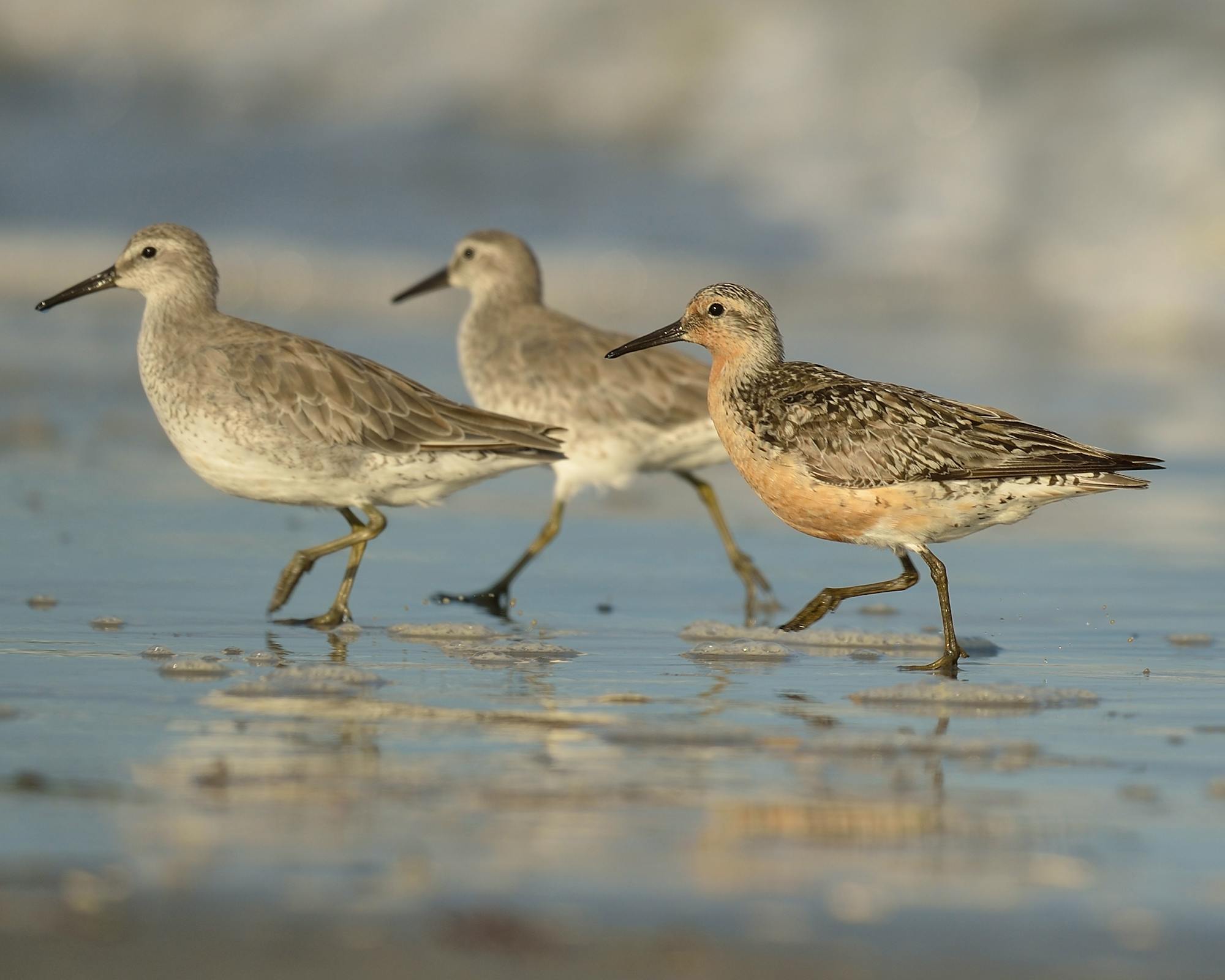
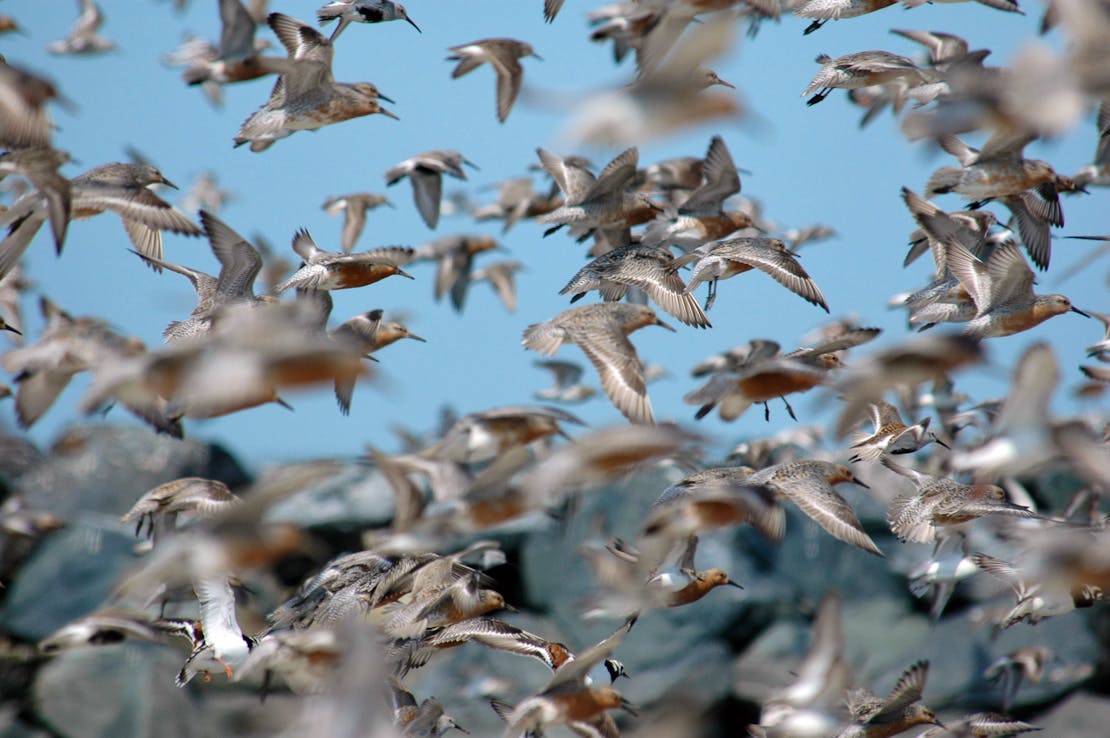

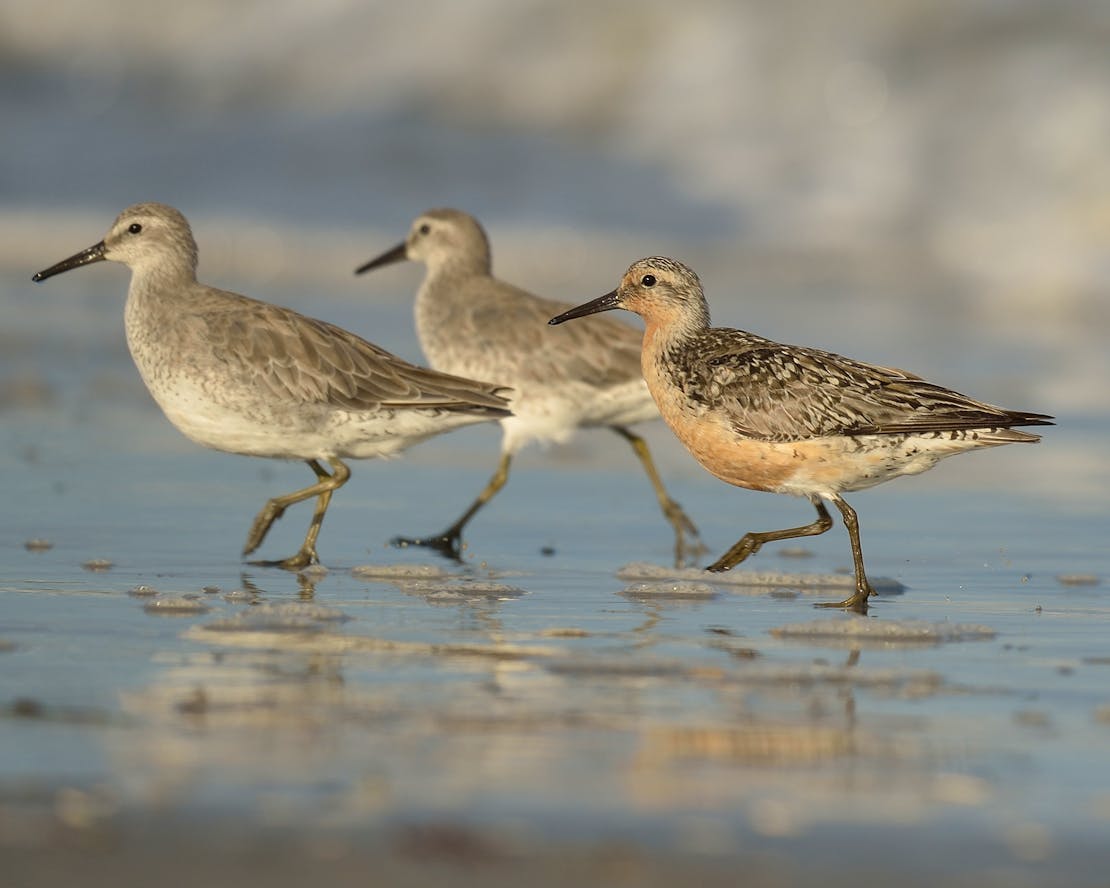


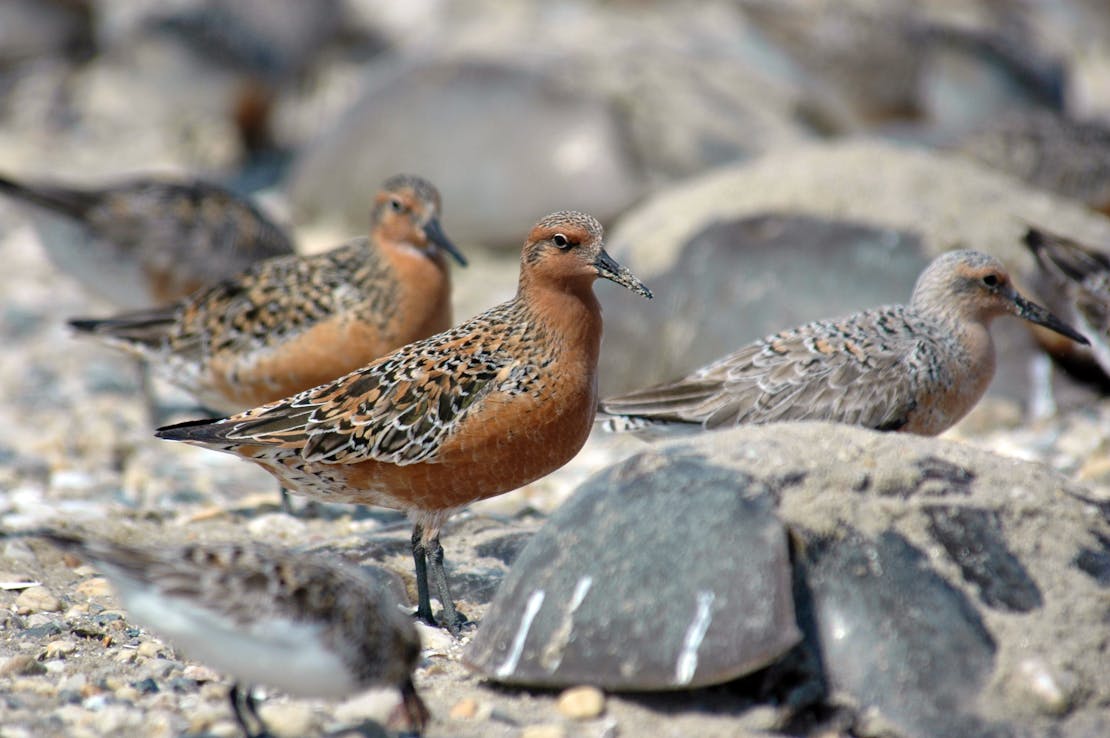


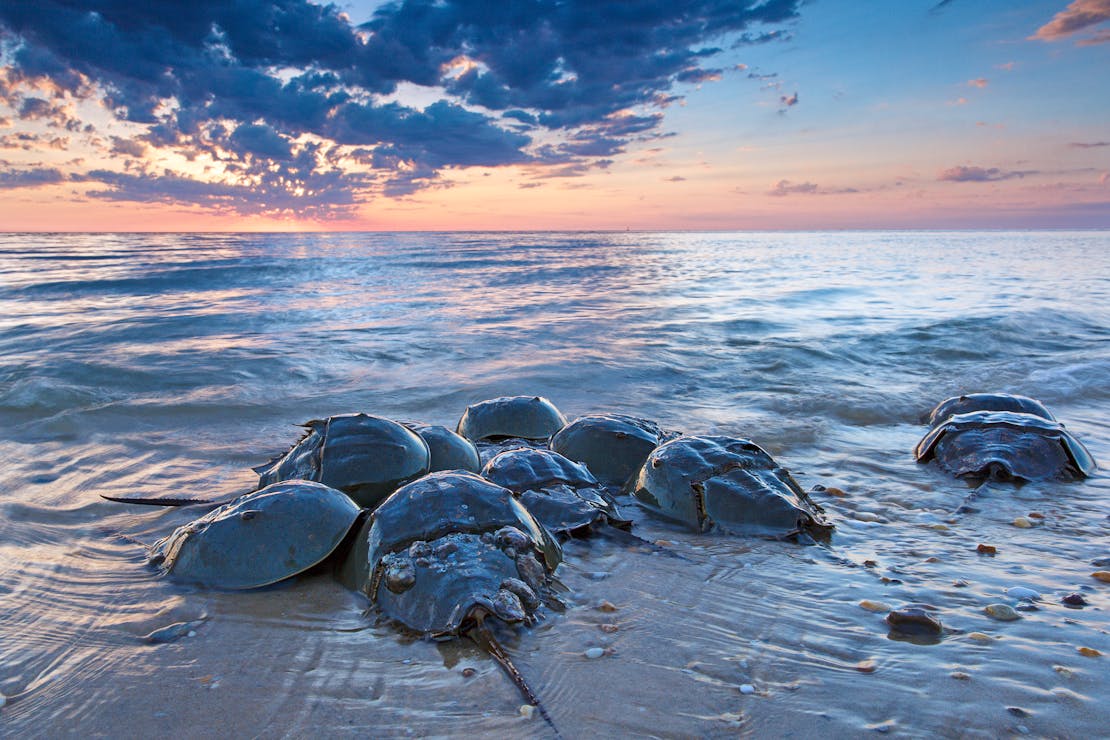



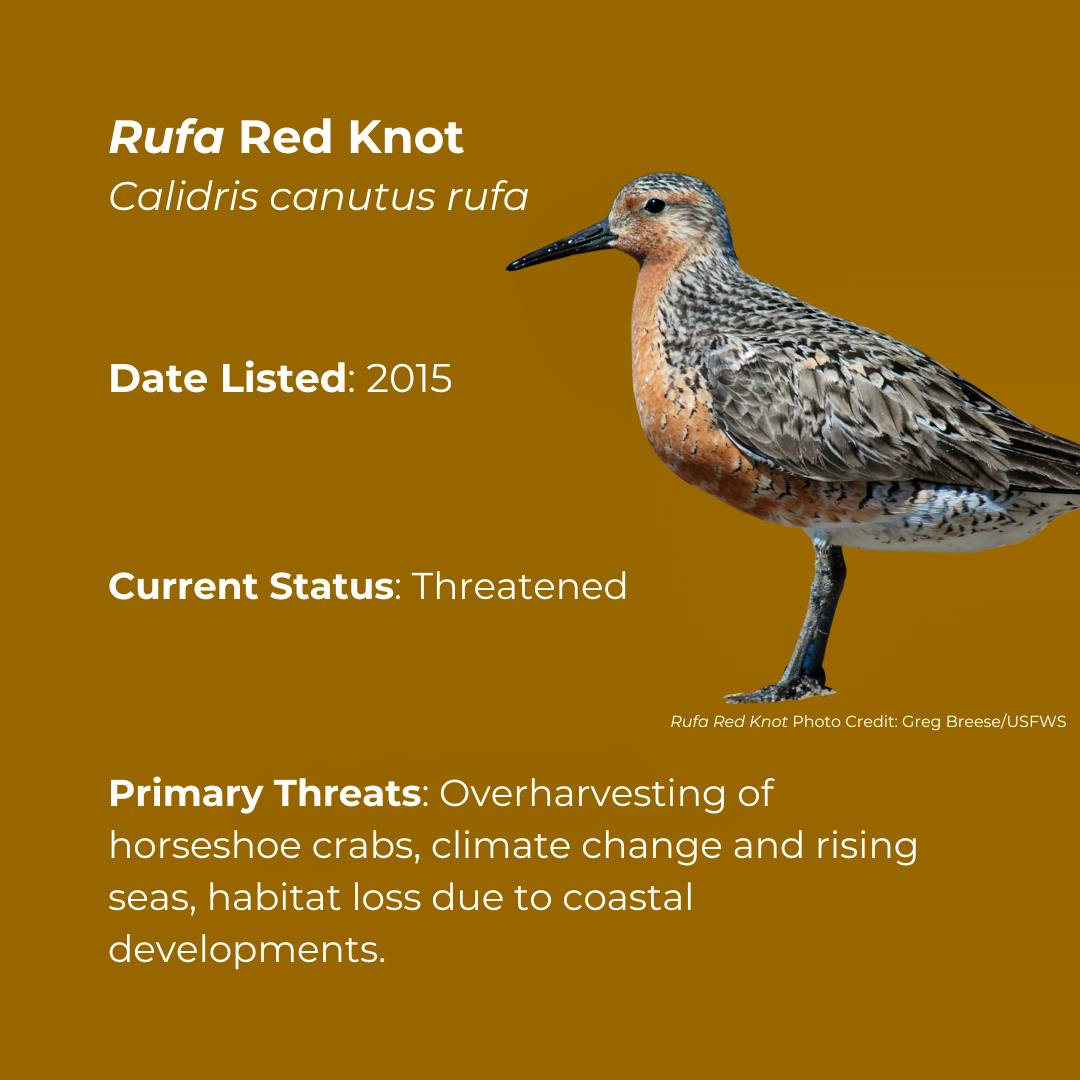







Follow Defenders of Wildlife
facebook bluesky twitter instagram youtube tiktok threads linkedin